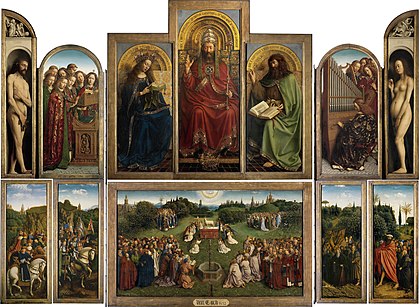Vellum 2 5 4
- Vellum is a type of paper made with inscription for use by enchanters to store enchants for later use. This allows for the trade and sale of enchantments without the enchanter and client meeting face-to-face. Prior to Patch 4.0.1, different types of vellum were needed depending on the level of the item to enchant or the type of enchantment; now, all enchantments can be applied to a single all.
- With our high quality A2 Vellum envelopes, you can have a translucent envelopes that will get noticed. Each one is a great partner to your greeting cards. Buy Translucent Vellum, 5.5 Bar, A2 Size, Plain, 5 3/4 x 4.
Vellum is one of the oldest surfaces available to artists, and is among the most technically challenging. Used by medieval monks, Albrecht Dürer, and by the UK government to record Acts of Parliament, it continues to inspire contemporary artists, many of whom are finding innovative ways to engage with vellum in their work.
╳63BVellum2.5.4.torrent ベラムは、テキスト原稿から、またはアプリケーション内で最初から電子書籍を簡単に作成することができます電子ブック生成ツールです。.
What is vellum?
While the term ‘vellum’ is sometimes used by manufacturers to describe the surface of fine art paper, traditional vellum is a form of parchment, specifically made from calfskin, that is cleaned, stripped of any hairs, and stretched over a frame to dry. Depending on the desired finish, its surface may then be abraded with pumice, and treated with lime or chalk.
Why use vellum?
Although vellum is sensitive to moisture (which causes it to buckle), it is far more resilient than paper to water, fire, and repeated handling, and does not rot, ensuring its longevity over hundreds of years.
Alongside these practical advantages, vellum’s off-white surface allows light to penetrate through translucent watercolour, imbuing the works painted on it with a glowing quality that contributes to its aesthetic appeal.
The history of vellum
Vellum has a long and illustrious history, and was described by the Greek historian Herodotus in the 5th century BC. In the Middle Ages, vellum was used in precious illuminated manuscripts, such as the Lindisfarne Gospels (produced in around 715 to 720 AD), and for important secular records, such as the Doomsday Book of 1086, and the Magna Carta in 1215.
The techniques used by artists in illuminated manuscripts also lent themselves well to portrait miniatures, which first became popular in the court of Elizabeth I, ensuring that vellum played an important role in art history even as paper and the printing press increasingly replaced manuscripts. From around 1700, however, miniaturists began painting on ivory, with vellum used mainly by botanical artists, such as Pierre-Joseph Redouté (1759–1840), a tradition that was revived in the mid-20th century by the remarkable Scottish painter Rory McEwen (1932–1982), whose work has inspired an entire generation of botanical artists.

Working with vellum today
Vellum 2 5 4 X 2
Contemporary painter Fiona Strickland is among those taking up the challenge of capturing botanical subjects on vellum, and has spent the past two years creating 18 vellum paintings that will be exhibited at Jonathan Cooper Gallery in London this September, a project that she describes as ‘a labour of love’.
Unlike paper, vellum is non-absorbent, meaning that watercolours sit on its surface, and must be applied using a ‘dry brush’ technique in multiple layers (with the artist waiting for each layer to dry before applying the next). ‘I apply the paint with a very small sable brush, slowly building subtle shifts in tone and colour to describe their form,’ Fiona explains. ‘It may take several hours or days to realise just a few centimetres and it can’t be rushed. It takes such tenacity and demands the utmost respect for the finest of artist’s materials.’ This painstaking process means that the largest of her works took over 400 hours to complete, yet the result is a glorious depth of colour that perfectly captures the form of her plant subjects, while also expressing intense energy and emotion.
Another artist using vellum to depict the natural world in a unique and striking way is the sculptor Laura Youngson Coll. After graduating from her MA at the Royal College of Art, Laura spent several years working for a traditional bookbinders, mastering the craft of leatherwork and working with vellum, which she then began to apply to her own sculptural installations. Her hauntingly beautiful depictions of lichen, cells, and pathogens have been exhibited at the Victoria and Albert Museum, the National Centre for Craft and Design, and won the Perrier-Jouët Arts Salon Award in 2014.
Tempted to try? Practical tips for working on vellum
Despite the challenges that vellum poses to artists, it undoubtedly offers a fascinating surface and strong visual impact. Here are a few practical tips for working on vellum:
- Vellum is very responsive to water, and tends to buckle. Mask your sheet to a board before you begin working, or buy a sheet that has been professionally mounted on board.
- Ensure that your hands and forearms are completely clean and free of any oil or hand cream before you begin working, as this can transfer to the vellum surface and prevent paint from adhering to it.
- Watercolour does not behave in the same way on vellum as it does on paper, and colours can appear far more vibrant on it. Use a separate piece of vellum for colour studies before beginning your painting.
- Enjoy experimenting, and take comfort in the fact that mistakes can often be erased, either by lifting an entire area of watercolour off with a brush and water, or on some kinds of vellum by scraping back the surface with a ‘pounce pad’.

Where to buy vellum?
Once produced by over 50 companies, the UK now has only one remaining parchment maker, William Cowley, which continues to make vellum by hand from ethically sourced calfskin. Artists can purchase vellum directly from Cowley’s, or via many local art suppliers.
Further reading: